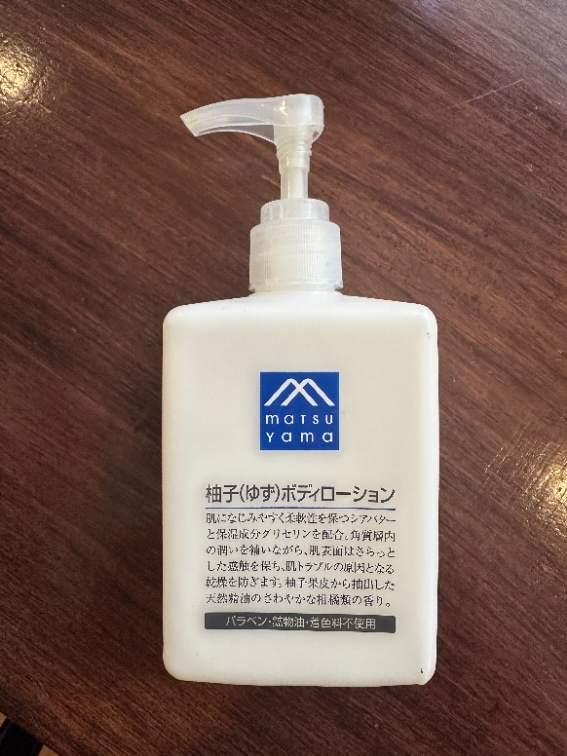A plethora of katakana?
« previous post | next post »
I sent the above photograph of a body lotion (bodirōshon ボディローション) bottle to Nathan Hopson and asked him why it has so many katakana words, also why they have to give a phonological gloss for yuzu, which should be a fairly common word in Japanese (even I know it!).
He replied:
Two things to say here.
First, the 柚 character is glossed here because it's not one of the "regular-use" kanji (常用漢字 jōyō kanji). It's not uncommon to see 柚子 written as just ゆず for this reason.
Second, for contemporary Japanese — especially the world of commerce — the ratio of katakana to other character types might actually be low. It's certainly not abnormally high. Other than the product type (ボディローション body lotion) and one loanword in common use (トラブル toraburu ["trouble"]), the other katakana is just for ingredients: shea butter, glycerine, and paraben(s).
The first sentence is a good example:
肌になじみやすく柔軟性を保つシアバターと保湿成分グリセリンを
Hada ni najimiyasuku, jūnansei o tamotsu shia batā to hoshitsu seibun guriserin o haigō.
"[This body lotion] contains shea butter, which is easily absorbed into the skin and keeps it [soft and] flexible, and the moisturizing ingredient glycerin."
Selected reading
- "Too many recent Japanese loanwords in English?" (7/17/13) — featuring "Matsumoto House Cleaning Service" written on a truck, all in katakana
- "Multiscriptal cosplay poster in Haifa" (1/1/17)
- "More katakana, fewer kanji" (4/4/16)

Mike Ryan said,
January 13, 2025 @ 9:23 pm
I would add that many beauty products that Japanese women use (my bathroom is full of them) contain a lot of words borrowed from products I presume were originally developed in the US; hence, you will see words like "cleansing", "lotion", "face pack", "skin" "oil", "gel" and so forth make their appearance in Katakana. Also, the chemicals in them are often rendered in Katakana as they were developed or discovered outside of Japan.
PeterB said,
January 14, 2025 @ 1:56 pm
The use of katakana in the ingredients list doesn't really need much comment, of course. But I think that exoticism is a factor for things like "body lotion". This is a context in which English brings the same impression of sophistication to Japanese consumers that French brings to Americans.
Chris Button said,
January 14, 2025 @ 4:36 pm
I've always wondered if 柚 is related to 榴?
I wonder also if the Japanese kun-reading "yuzu" for 柚 also ultimately connects with the Sino-Japanese on-reading "yū/yu". Laufer's (1919) Sino Iranica suggests an Iranian source, and also attempts to tie in the the "ro" of the kun-reading "zakuro" for 榴.
John J Chew said,
January 23, 2025 @ 4:53 pm
I would have written najimu in kanji as well (馴染む), forgetting that it’s such a high-frequency non-joyo-ism that it appears on at least one website listing so-called うっかり使用してしまいがちな常用外漢字 (ukkari shiyou-shi-te-shimai-gachi-na joyogaikanji). Really, I'm just commenting to show off that lovely agglutination in the middle (use-verb-participle-regret-prone-adjective = of a kind that one is prone to regret accidentally putting into use).